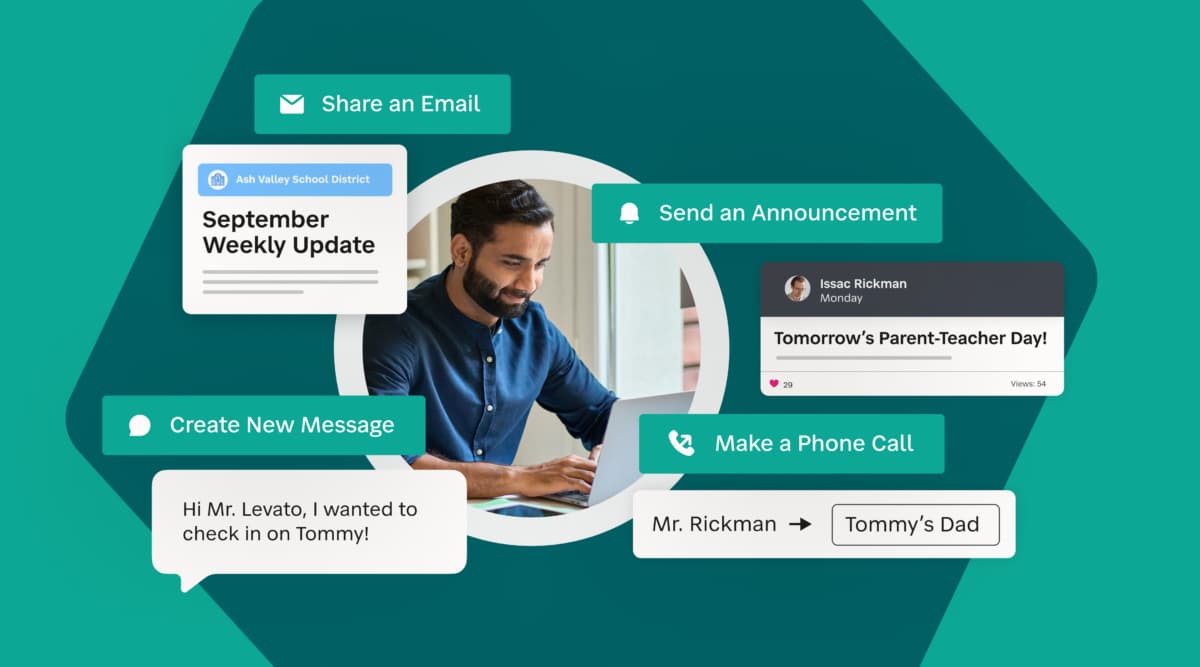

When we think about district goals, engaging all families through school-home communications must be part of the equation.
Creating a Culture of Showing Up
We can create a culture where everyone feels welcome––and a sense of belonging––by implementing tools that encourage family engagement and involvement. In the classroom, equitable practices include differentiated instruction, flexible grouping, and formative assessment. At the district level, we need to be sure to extend a fair distribution of resources so that all families have what they need to succeed.
Family Engagement + School Communications + Chronic Absenteeism
Since the onset of the pandemic, absenteeism has risen by more than 25%, according to AttendanceWorks. At-risk students––including students of color, students living in poverty, and students with disabilities––have been disproportionately affected. Asthma, diabetes, food insecurity, and lack of a safe route to school are all issues that keep kids home, often resulting in unexcused absences, especially in the elementary years. And early chronic absenteeism is predictive of a higher dropout rate and higher likelihood of entering the criminal justice system.
Here’s the rub. Most districts, for funding purposes, are counting how many students attend school each day, not which students. The students who most need to be at school are the ones most often absent from it. And at a district or even building level, we might not even notice.
The students who most need to be at school are the ones most often absent from it.
Enter School Communications
School communications can go a long way towards creating a sense of belonging––or school connectedness––crucial to an inclusive school community. Studies show the more home adults hear from teachers, the more successful their children are in school––from behavior to attendance to achievement.
Here are 3 steps you can take to better engage everyone:
- Send home weekly digital, translatable classroom/homeroom updates that include schedule, lunch, events, assignments, and attendance shoutouts.
- Investigate your data for patterns of engagement. Measure those patterns against attendance data. When they meet up––a disengaged family & a chronically absent student––work with the school counselor to schedule a 1:1 conversation with the family and develop an attendance plan together.
- Adopt an automated attendance management system, like SchoolStatus Attend, to easily reach families in their preferred language—and boost overall attendance and achievement.
Getting Your Faculty On Board
Building leaders must model the kinds of communications practices that foster school-connectedness. Here are two simple suggestions:
- Send weekly updates to faculty and staff with inclusive goals and resources.
- Send home weekly updates from the principal to set the tone for communications.
Coaches should also get in on this as they work with teachers on the specific strategies needed to work successfully with at-risk students. SchoolStatus Connect & Attend Solutions help you easily track attendance trends and reach out to families—all in one place. If you’d like to learn more about how to engage all families in school communications, download our eBook. You’ll find more information about and tips for improving chronic absenteeism, encouraging more family engagement, and supporting student success as a community.
Stay Connected
News, articles, and tips for meeting your district's goals - delivered to your inbox.








